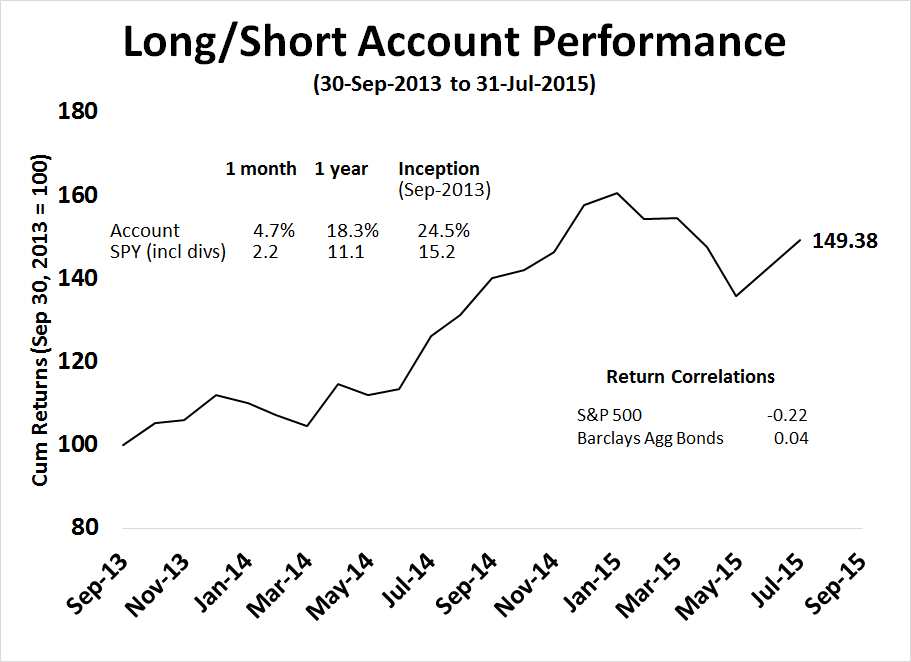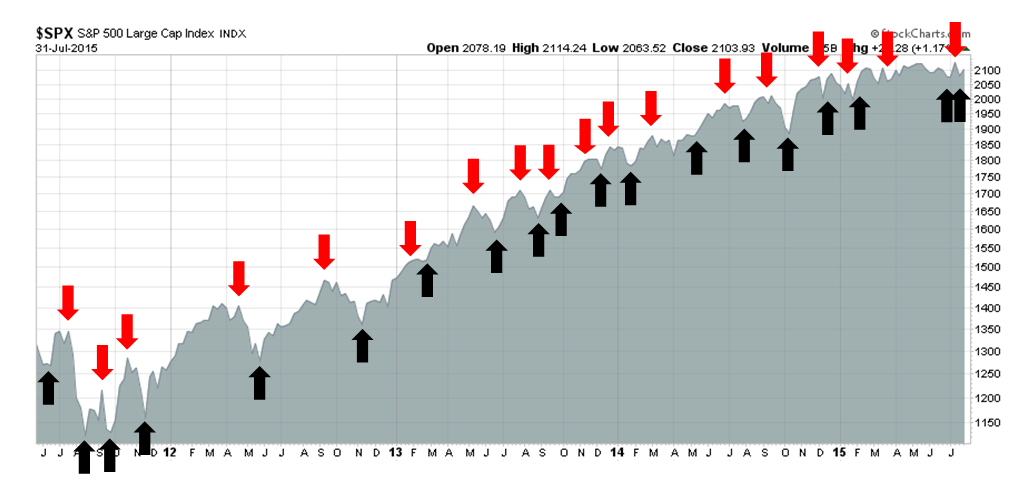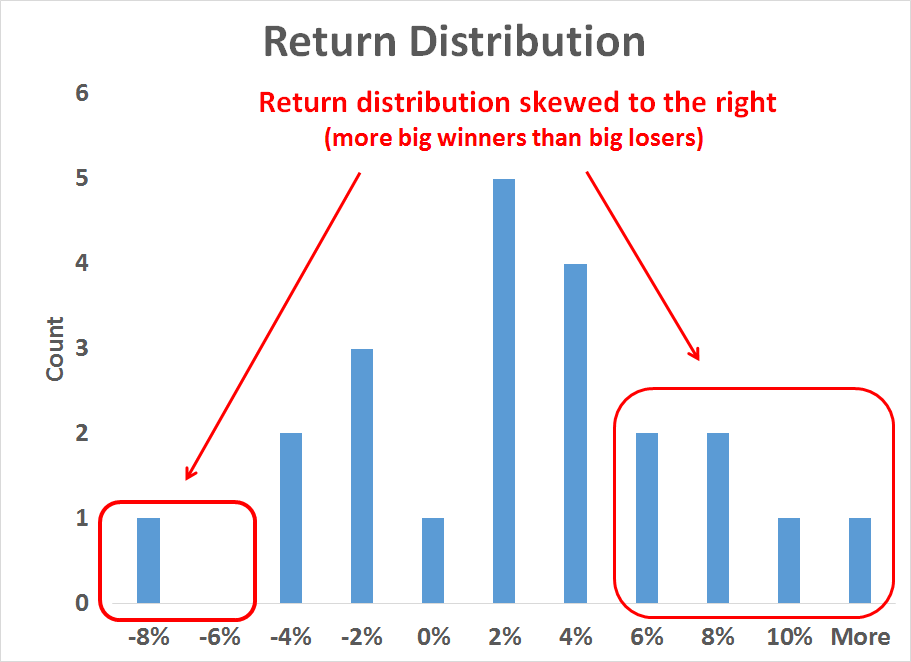This is the latest performance update on my long-short account based on my Trend Model signals (see An intriguing Trend Model interim report card). The Trend Model based trading account added to its June gains with a 4.7% rise in July; the one-year return was 18.3%; and the return from inception of September 30, 2013 was 24.5%.

I reiterate my disclaimer that I have nothing to sell anyone right now. I am not currently in a position to manage anyone`s money based on the investment strategy that I am describing.
Trend Model description
For readers who are unfamiliar with my Trend Model, it is a market timing, or asset allocation, model which uses trend following techniques as applied to commodity and global stock market prices to generates a composite Risk-On/Risk-Off signal (risk-on, risk-off or neutral). I have begun updating readers on the Trend Model signals on a weekly basis and via Twitter) @humblestudent as new developments occur.
The chart below shows the actual (not back-tested) changes in the direction of the signal, which are indicated by the arrows, overlaid on top of a chart of the S&P 500. You can think of the blue up arrows, which occurred when the trend signal changed from negative to positive, as buy signals and the red down arrows, which occurred when the trend signal changed from positive to negative, as sell signals.
Trend Model Signal History

A proof of concept
While the results from the above chart representing paper trading is interesting, there is no substitute for actual performance. As a proof of concept, I started to manage a small account that traded long, inverse and leveraged ETFs on the major US market averages and, on occasion, sector and industry ETFs. Trading decisions were based on Trend Model signals combined with some short-term sentiment indicators. The inception date of the account was September 30, 2013, For more details on how the Trend Model or how the account is managed, see my post Trend Model FAQ).
When evaluating the performance of this trading account, keep in mind that this is intended to be an absolute return vehicle. While I do show the SPDR S&P 500 (ARCA:SPY) total return, which includes re-invested dividends, for illustrative purposes, the S&P 500 is not an appropriate benchmark for measuring the performance of this modeling technique.
Strategy characteristics still promising
Overall, the returns of this strategy remains promising:
- Long term returns are respectable, despite the recent volatility. Despite the difficult returns experienced earlier this year, the one-year return stands at 18.3% and return from inception (September, 30, 2013) was 24.5%.
- Returns are consistently positive, with a 68% monthly batting average.
- The Calmar ratio, or reward-to-pain ratio of return to max drawdown, is 1.6, which is pretty good. By comparison, during the 2008-2009 period we saw the drawdown for equities come in at about 50% and most balanced funds saw losses of about 20%. Assuming a Calmar ratio of 0.5 and working backwards, it would be hard to envisage long-term return expectations of 25% for stocks and 10% for balanced funds today.
- Returns are highly diversifying compared to major asset classes. They are uncorrelated with equities (correlation of -0.24 with SPY) and bonds (0.02 with AGG).
- The return pattern is bell-shaped but skewed to the right. The chart below, of the monthly return patterns, is roughly bell-shaped, but it also shows that the strategy experienced a lot more large positive returns than large negative returns, which indicates that the strategy is mostly cutting losses quickly and letting winners run.

2015, an acid test year
The market environment in 2015 has been challenging for the Trend Model trading strategy. In a recent post that outlined my investment views over different time horizons, I postulated a rally to test or possibly make market highs followed by a correction (see Bullish and bearish over different time frames). I wrote that "the weeks and months ahead are likely to be volatile and full of twists and turns". The rest of 2015 will be a key test for this model and trading strategy if the environment is to be as volatile as I expect it to be.
To summarize, investment results this year have been challenging but continue to be promising for this model longer term. I am comfortable with attributing the recent return hiccup as a characteristic of a difficult environment for this class of model, rather than anything fundamentally wrong with the modeling approach.
Disclosure: Cam Hui is a portfolio manager at Qwest Investment Fund Management Ltd. ("Qwest"). This article is prepared by Mr. Hui as an outside business activity. As such, Qwest does not review or approve materials presented herein. The opinions and any recommendations expressed in this blog are those of the author and do not reflect the opinions or recommendations of Qwest.
None of the information or opinions expressed in this blog constitutes a solicitation for the purchase or sale of any security or other instrument. Nothing in this article constitutes investment advice and any recommendations that may be contained herein have not been based upon a consideration of the investment objectives, financial situation or particular needs of any specific recipient. Any purchase or sale activity in any securities or other instrument should be based upon your own analysis and conclusions. Past performance is not indicative of future results. Either Qwest or Mr. Hui may hold or control long or short positions in the securities or instruments mentioned.
